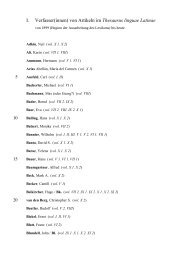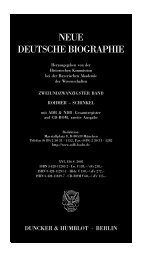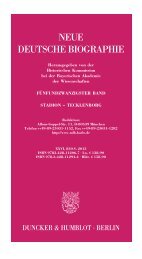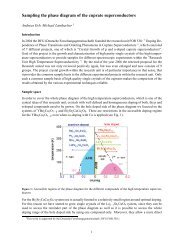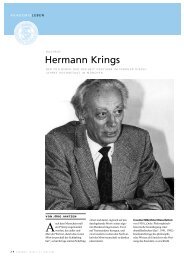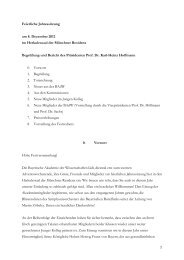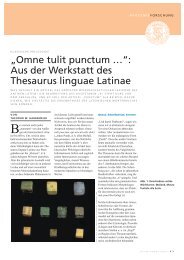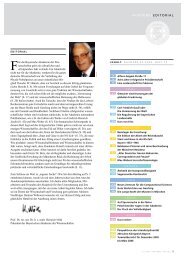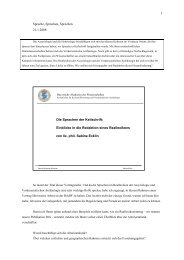II. Applications of the Josephson Effect
II. Applications of the Josephson Effect
II. Applications of the Josephson Effect
Create successful ePaper yourself
Turn your PDF publications into a flip-book with our unique Google optimized e-Paper software.
R. Gross, A. Marx, and F. Deppe © Wal<strong>the</strong>r-Meißner-Institut (2001 - 2013)<br />
4. Superconducting Quantum Interference Devices<br />
Superconducting Quantum Interference Devices = SQUID<br />
single <strong>Josephson</strong> junction as can be used as<br />
magnetic field sensor: I s m = I s m B<br />
- sensitivity: dI s /dΦ ≈ I s m /Φ 0 = I s m /B 0 t B L<br />
increase t B L to increase sensitivity<br />
• superconducting loop with one or more <strong>Josephson</strong> junctions<br />
relevant area: loop area<br />
• dual or multi-beam interference:<br />
Superconducting Quantum Interference Devices (SQUIDs)<br />
• relevant physics:<br />
flux quantization in superconducting loops and <strong>Josephson</strong> effect<br />
• SQUIDs = most sensitive detectors for magnetic flux<br />
• can detect every quantity that can be converted into magnetic flux:<br />
magnetic field, field gradient, current, voltage, displacement, …<br />
• most relevant types <strong>of</strong> SQUIDs:<br />
direct current (dc) and radio frequency (rf) SQUIDs<br />
• dc-SQUIDs: highest energy sensitivity at low temperatures<br />
AS-Chap. 4 - 3




